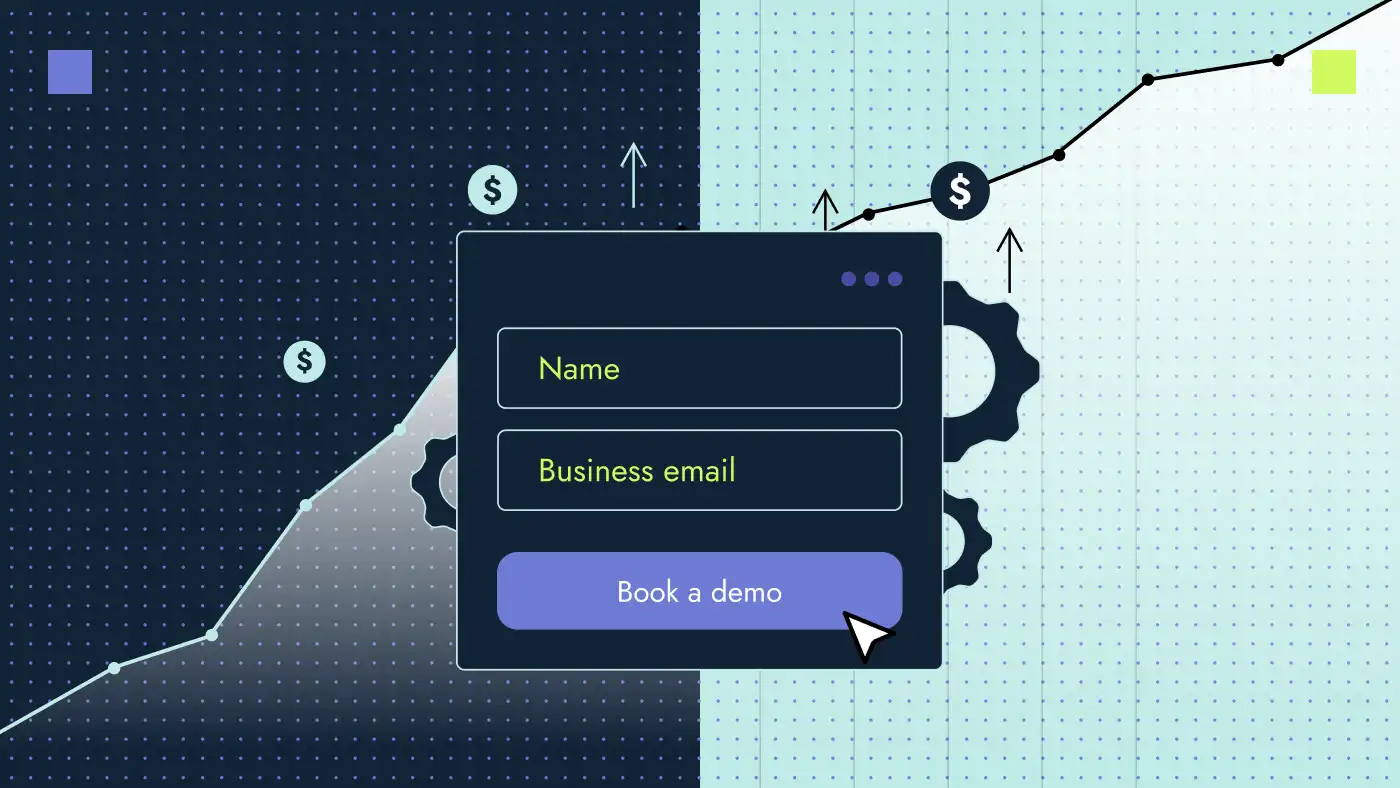Without a solid game plan for introducing your new product/service to the market, you’re much more likely to fail a launch. The go to market (GTM) strategy should be a consistently evolving document that is visible to everyone in your company that influences customer experience: sales, marketing, delivery team, core investors and the leadership team.
What is a go to market (GTM) strategy?
A go to market strategy is a plan on how you will sell your new product or service to an unfamiliar market. To do that, you’ll need to identify, target and sell to a relevant audience. But…it isn’t that easy, as most teams utterly fail at identifying the one thing that matters to GTM – solving a need.
The only purpose of your GTM strategy is to get your product or service into the right audience’s hands in the shortest time possible. Period.
Critical questions your GTM plan needs to answer:
- Who is your target audience?
- Are you solving a customer pain point? Do you have use cases built out?
- Who are your competitors?
- Product positioning fit
- Pricing strategy: Are people willing to pay for it?
- Product roadmap
- Where and how are you going to sell it? On Inbound Marketing, oh and Outbound too.
- How will you support new clients?
- Do you have a technology stack to aid you in going to market?
- Have you done legal, technical, and consulting due diligence?
- Do you have a roadmap, can you afford it, and do you know when to stop?
1. Who is your target audience?
Speaking of ideal customers, have you built out your buying personas that will avidly use your product? To do this, you really need to understand the buying journey and decision-making and influencing group.
Get specific, paint a picture of the day in the life of your ideal customer, and how you’re aiming to solve their pain points. What are they doing now to solve them, and how are you better?
Some pointers to keep in mind:
-
- B2B vs B2C: as you’re building out your personas you’ll need to understand if this is a one person decision that’s relatively no-frills like a B2C purchase, or, are there more people involved? (B2B). If you are dealing with B2B, you’ll need to ensure that EVERYONE in the decision-making group sees value in the products purchase, or at the very least, does not have an easy rejection reason for it.
- Buying journey: know your prospects’ purchasing journeys, as that will tell you where to nudge their decisions, in order to prefer your product instead of the competition.
- Total Addressable Market (TAM): this is the total demand for your product or service. You need to know this number as it will help paint a picture of your playing field.
- Serviceable Addressable Market (SAM): this is the potential market you can capture…one day should you grow big. Basically, how many people will actually benefit from your product and consider purchasing from you.
- Serviceable Obtainable Market (SOM): this is the most realistic number of people that not only need your product, but ones you can sell to and convince to convert.
2. Are you solving a customer pain point? Do you have use cases built out?
It is not necessary to do extraordinary things to get extraordinary results. ~ Warren Buffett
Not surprisingly, businesses that do not plan ahead without researching their assumed market needs, are more likely to fail a product or service launch (about 42% according to CB Insights) than those that have a detailed entry plan to address a market need.
The question you’re looking to answer is; will my ideal customer see a need for my product? Here are the top questions you should be running through prior to designing your product’s features:
- Have you defined your ideal customer’s personas? (discussed below)
- Have you tested the feature ideas with a valid audience?
- Have you incorporated your audience’s feedback?
Use cases help you understand the issues your audience faces from their perspective. This in turn will help you build a better product, service, and resonating customer experience. When building out your pain point solutions (based on problem statements), try clustering them into the below categories:
- Financial Pain Points: is your product/plan more affordable? Or does it help them build revenue?
- Productivity Pain Points: can you help your client do something more efficiently?
- Support Pain Points: are you able to provide speedy support services without penny-pinching?
- Process Pain Points: can you reduce complexity in your client’s day-to-day work?
As a tip, these four clusters should be used every single time you build marketing campaign messaging. What’s great is that if you nail them down when designing your GTM plan, it will be automatically baked into your product or service’s value add.
3. Who are your competitors?
Learn from the mistakes of others. You can’t live long enough to make them yourself. ~ Eleanor Roosevelt
Take Elanor’s advice, and do ample research on your competition, what makes them successful? In very few cases, it’s a sensational product, in most cases though… it’s a sensational team. Now that I’ve given this away, think of your team, are you all fanatical about your product? Does it get everyone excited about the build process and finger-crossed the launch date?
Back to the competitor, however, here’s a quick start on what to be looking for:
- Who gave them funding, and what’s the link?
- What geographies are they targeting? Is there a special reason like a support team on the ground?
- What search queries are users using to find them online? What are their top landing or in-app pages?
- How much are they spending on advertising?
- How big is their sales team?
- Do they seem bigger than they are? (i.e. using satellite offices)
- What type of people are connected to them on social networks?
- What personas are more likely to be resonating with their products/services?
- Have they been featured in PR releases? Were they paid spots?
4. Product positioning fit
Don’t let what you cannot do interfere with what you can do. ~ John R. Wooden
There are some products out there that require a team to explain the value – don’t be that product. Try avoiding the trap of overengineering just because the competitors have it too, or one vocal client keeps asking for a certain feature.
Product position is your elevator pitch on a unique position and value offer to your audience.
Focus on what you’re good at and keep refining it based on popular ask. Here are some seriously awesome examples of product positions:
- Harry’s: you deserve a great shave at a fair price.
- Fliteboard: eFoil gives the sensation of flying over water.
- HubSpot: there’s a better way to grow.
- YotPo: great brands are built on happy customers.
- FloQast: close management software built by accountants for accountants.
Keep in mind that your brand kit, personas and attention to pain points play a massive role in your product position, ensure you pay special attention to messaging and tone here, so you’re crystal clear as to what you do and what’s in it for them.
There are various ways of positioning yourself. Here are the top 7:
- Value positioning
- Benefit positioning (popular)
- Problem/Solution positioning (popular)
- Quality positioning
- Price positioning
- Versus competitor positioning
- Celebrity pull positioning
5. Pricing strategy: Are people willing to pay for it?
Perhaps the reason price is all your customers care about is because you haven’t given them anything else to care about. ~ Seth Godin
In case you’re building a product/service that is easily researched, do some secret shopping and understand how your competitors are selling, what’s their go-to value proposition and pricing breakdown?
Perhaps you’ve found a way to enter an old-school industry while offering a modern pricing structure of easier payments, delayed payments, or financing. Whatever it is, ensure you map out the pricing plans of your competition, and understand what you can be doing differently to get clients to consider you also.
Say you think that you have no competition in the space, pricing is generally easy to test out by running an online poll or survey with a closed focus group.
At the end, I’m bing on selling value, do your best to never discount or underprice as that is typically a race to the bottom. Instead, show an overwhelming amount of value so that clients aren’t focused on pricing but on selecting the right feature set.
6. What is your product roadmap?
Determine who you are and what your brand is, and what you’re not. The rest of it is just a lot of noise. ~ Geoffrey Zakarian
A massive sticking point for software engineers is going for perfection, stop. You’ll be better off with the “good enough” mentality on this one as scope creep and feature overkill, might kill your business.
The reason for this is that you still do not know what your audience actually wants. You’ve just made some well informed (hopefully) decisions based on rigorous research on your personas. So jumping the gun and building a shit load of features/services – which people might not care for, is a waste of time and money.
Now, don’t mistake this as going too minimal, your audience does have some natural flow expectations which you better be ready to satisfy. For example, if you’re building a bicycle, the natural given is that you’ll have pedals, and maybe even more speeds.
7. Where and how are you going to sell it? On inbound marketing — oh and outbound, too
A man who stops advertising to save money is like a man who stops a clock to save time ~ Henry Ford
Typically at least one of the founders has a good grasp of both inbound and outbound marketing, both of which need to be considered in detail prior to launching.
By asking a simple question of; how will we be selling the product? Will get you to start brainstorming on effective methods on generating leads for your launch.
Organic search and content are incredibly important to drive users. But to “force” awareness, you’ll need to also consider (more mandatorily plan out) resonating paid advertising campaigns to complement your inbound efforts.
This is simply because inbound takes a tad to work to fire up, while outbound is your sure shot way to immediately drive traffic to where you need it most.
Now, as all things go, if you’ve nailed your inbound & outbound strategy and tactics you’ll be utilizing, the next thing is to pick your most-likely-to-win geography. In simple terms, where are people more likely to welcome your product/service offering? This might be a physical location or a theoretical one like an industry definition.
8. How will you support new clients?
You’ll never have a product or price advantage again. They can be easily duplicated, but a strong customer service culture can’t be copied. ~ Jerry Fritz
Ah yes, customer service is the #1 not cared for thing by sales, curiously enough also the #1 reason why clients leave. Gartner research found that 44% of customers are anxious about having made the wrong decision after they’ve made a purchase, ouch. So yeah, loyalty programs and the expected instantaneous support…dare I even mention a chatbot, still matters a lot.
Good support is easy to bake in as long as it’s part of your company culture already. Just ensure you have the light technology needed to support questions & answers and a solid return/exchange/refund policy.
9. Do you have a technology stack to aid you in going to market?
Now is the time for operational excellence, ensure your GTM stack is making the daily grind efficient. It must be aligned to move your clients from acquisition through to retention. ~ Luivir Rangel | Productive Shop
As I’ve covered previously in depth, your marketing and sales technology stack must be aligned with your buyers’ journeys, in order to help you aid in identifying, engaging, negotiating, closing and retaining clients. There’s a good reason for this too, as 86% of companies invest in technology to improve their productivity (Business Wire).
-
- Wrike: Build an affordable collaborative team plan, easy to change and integrate with your file sharing tools.
- GSuite: affordable and collaborative, shared documents, excel sheets, presentations and more. You can’t go without it.
- DPL.ai: if you actually want to know the make-up of your audience, their psychographics and how to sway them, there’s no better persona identification and segmentation tool.
- Ahrefs: Know what your potential market is searching for, how they are finding your competitors (if you have any) and what possible phrases you should be targeting.
- Google Display Advertising: once you know your personas and phrases they are more likely to resonate with, build a campaign to generate awareness.
- Crunchbase: learn about your competition and if you’re worthy of funding based on affinity businesses getting funding for a similar idea.
- Zoominfo: expensive, but once you’ve got technographics, your savvy sales VP will be doing backflips when prospecting. This applies more so for B2B marketing and sales strategy.
- HubSpot: you can’t live without an affordable all-in-one marketing & sales automation platform that’s easier to use than a one gear bike while being packed with intelligent features.
- Stripe: Will you be processing payments on a custom platform? (most likely).
And the list goes on, this was just a sampler of my must-haves.
10. Have you done legal, technical and consulting due diligence?
Learn the rules like a pro, so you can break them like an artist. ~ Pablo Picasso
Business is about breaking the rules. Just ensure it’s worth the risk. If we weren’t going to step outside the bounds of what’s known and charted, how would we invent anything new?
- Political, for example, new legislation or older red tape like rules. That is why you never wait for change and adopt fast, educate your employees and always find a way around. Remember laws are built on what is known, not on category creators – if you’re able to bend things, go for it as long as it’s worth the reward, make excuses and pay your anticipated penalties later (ex: Google, Uber, AirBnB, etc.)
- Economic, for example, the current inflation due to government forced economic shutdown. It is important to always adjust your pricing model, improve cash flow, incorporate automation and reduce debt. Always be checking your audience’s appetite to pay for your services, you might just be important enough for a $4 dollar subscription but start pushing into the $20s (ex: SiriusXM) and see your client base annihilated.
- Social, for example, your target audience is getting older and changes tastes and views. If your business model will be focused on driving value for the audience, you should not run into this issue.
- Technology is key to evolution and growth. Evolution of e-commerce, virtual reality, and real-time communication. Ensure that you know the technology you are using, to the best of your knowledge isn’t already on its way out.
- Environmental – weather conditions or national emergencies (Covid..ahem). The best advice would be to have insurance and to have reserved funds for at least 1 year of operation.
11. Do you have a roadmap, can you afford it and do you know when to stop?
A goal is a dream with a deadline. ~ Napoleon Hill
- Roadmap: in comes the project plan and the know-how on actually building out everything we’re talking about in this blog post, into realistic actionable tasks. Sure people are generally poor at estimating timing & pricing for -everything- but that doesn’t mean you shouldn’t have a clear roadmap listing critical features, to hiring critical people and launching campaigns. It’s part of the full plan to get to your audience. WIthout a project plan, expect your costs to soar, investor expectations to be mismanaged and campaigns to be less effective.
- Funding: Going to market ain’t cheap, even when you’re boot strapping. Yes we’ve all heard of those one-off stories of how someone did it on the cheap – but most likely you’re not that someone, and belong to the 99% of businesses that need to forecast the budget it takes to successfully launch a service or product. Note that 33% of emerging business owners state that their challenge is getting sufficient funding (Guidant Financial).
- Goal Setting: you’ll need to set basic sales, user acquisition, search traffic, paid campaign conversion and partner development goals in order to measure growth. This way, if you haven’t grown, say…within 12 months you’ll need to do an assessment of whether to continue or not. What’s great about goal setting and tracking meaningful KPIs is that underachieving over exceeding them really does force you into asking the right questions.
The curveball
Ready for this one? What you’ve just read is just a thumb-in-the-wind guide, history is littered with crazy successful launches that had absolutely zero thought to them (Slinky), or, products that could not have been easily researched (Heinz Ketchup) for client adoption.
So what made those launches so successful? How did the marketing teams know what the potential customer needed when the product wasn’t even a category? And, what made these brands so resonating for generations to come?






